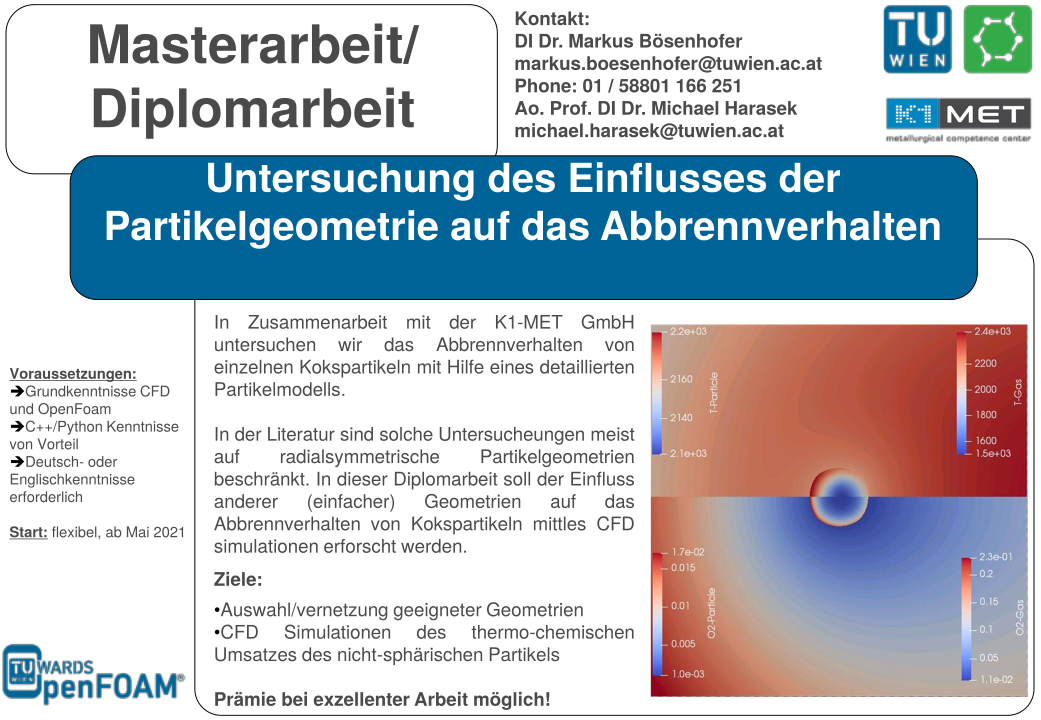Investigation of the Influence of Particle Geometry on Particle Conversion
Abstract
Goals:
- Choosing suitable particle geometries based on literature research and meshing them
- Investigation of the influence of gas flow direction (on non radially symmetrical particle geometries)
- Resolved CFD simulations of the thermo-chemical conversion of the non-spherical particle, employing a detailed particle model
Results:
- Correlation between particle shape and conversion behavior
- Deviations of conversion rates, species mass fractions, reaction rates, and temperature profile in comparison to spherical particles
Description:
Computational fluid dynamics (CFD) is a versatile tool. Not only can large-scale processes be investigated, but it is also possible to depict processes on the single-particle scale. In cooperation with K1-MET GmbH we explore the conversion behavior of individual char particles. The scales for these particles are in the range of multiple micrometers up to a few centimeters. This investigation is based on a detailed particle model, which resolves not only the flow field around the particle but also the processes inside the particle. This detailed particle model was implemented in the CFD toolbox OpenFOAM.
The experimental determination of the influence a single particle’s shape has on the conversion behavior is limited to the surrounding gas phase and does not provide information about the inside of the particle. Resolved simulations of the particle conversion are being used to gain a better understanding of the processes inside the particle and how they depended on particle geometry. The common approach is to use radially symmetric geometries (2D: circle, 3D: sphere) for such simulations. However, our model allows us to study different particle geometries that are not limited to being radially symmetrical. SEM imaging has shown that the actual shapes of char particles are not radially symmetrical, but rather rectangular.
The goal of this master’s thesis is to investigate the influence, the shape of an individual char particle has on its conversion. Therefore, first suitable (simplified) geometries have to be identified, that are then meshed for use in CFD simulations. Then a series of simulations will be performed, using the detailed particle model, and the results will be compared to the existing data on spherical particles. Special attention should be given to the examination of differences in regards to species mass fractions, reaction rates, conversion rates, and the temperature profile inside the particle.
Based on the distribution and change of these characteristics it should be determined, whether the simplified radially symmetrical particle shapes found in literature are sufficient, or if more complex geometries have to be employed.
Prerequisites:
- Basic knowledge in OpenFOAM (CFD-Software)
- Basic knowledge in C++ and Python are of advantage
- Sufficient knowledge of German or English
Start:
This thesis has no experimental part and can therefore be done without having to be present at the university, as long as the Covid-situation does not allow for it.
Regular meetings with the supervisors will be held online.
Contact:
DI Dr. Markus Bösenhofer
Matthias Kiss MSc.
Ao. Univ. Prof. DI Dr. Michael Harasek
Financial renumeration possible for excellent work



